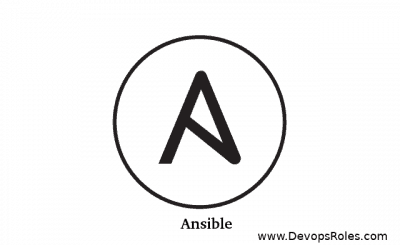Infrastructure as Code (IaC) tools are essential for modern DevOps practices, enabling automation and repeatability in infrastructure management. Two popular choices are Ansible and Terraform, each offering distinct strengths and weaknesses. However, when it comes to security, understanding the differences is crucial for building robust and resilient systems. This in-depth guide will provide a detailed comparison of Ansible Terraform Security, helping you make informed decisions based on your specific needs and security priorities.
Table of Contents
Ansible Security Model
Ansible, a configuration management tool, focuses on managing the state of existing infrastructure. Its security model centers around managing access to its control plane and securing the communication between the Ansible controller and managed nodes.
Authentication and Authorization
- Ansible utilizes SSH keys for authentication, promoting secure connections by eliminating the need for passwords. This is a best practice and should be implemented in any Ansible deployment.
- Role-based access control (RBAC) can be implemented using various methods, including Ansible’s own features or integrating with external identity providers like LDAP or Active Directory. Proper RBAC ensures that only authorized users can access and modify critical infrastructure.
- Inventory management is crucial. A well-structured inventory file clearly defines which hosts Ansible is allowed to manage, preventing unintended access to systems.
Secure Communication
- SSH is the default communication method, offering encryption and authentication. However, ensure that SSH is configured securely, using strong key exchange algorithms and disabling password authentication.
- Consider using Ansible Vault to encrypt sensitive information within playbooks, such as passwords or API keys, preventing these credentials from being exposed in plain text.
- Network segmentation can isolate Ansible controllers and managed nodes, limiting the impact of potential breaches.
Playbook Security
- Write idempotent playbooks to ensure that configurations remain consistent. Idempotency prevents unintended changes or security vulnerabilities introduced by repetitive playbook runs.
- Use Ansible’s built-in modules securely and responsibly. Always review the documentation and understand the implications of each module’s actions.
- Regularly update Ansible and its modules to benefit from the latest security patches and bug fixes.
Terraform Security Model
Terraform, a provisioning tool, focuses on managing the creation and management of infrastructure. Its security model revolves around securing the Terraform state file, managing access to your cloud provider, and validating infrastructure configurations.
State File Security
- The Terraform state file contains sensitive information about your infrastructure. Protecting it is paramount. Use a remote backend like AWS S3, Azure Blob Storage, or Terraform Cloud to store the state file securely, enabling access control and versioning.
- Encrypt your Terraform state file at rest and in transit using encryption mechanisms provided by your chosen backend.
- Implement a robust access control system to the remote backend. Limit access to authorized users only.
Cloud Provider Security
- Terraform interacts with cloud providers (AWS, Azure, GCP, etc.) via their APIs. Therefore, securing your cloud accounts is vital. Utilize IAM roles, service accounts, or other provider-specific access management features to grant least privilege access to Terraform.
- Regularly audit your cloud provider’s security logs and alerts for any suspicious activity related to your Terraform deployments.
- Use security best practices provided by your cloud provider to ensure the security of your infrastructure even after it’s been provisioned.
Terraform Code Security
- Employ Infrastructure as Code (IaC) scanning tools to analyze your Terraform configurations for potential security vulnerabilities and compliance issues before deployment.
- Use a version control system (like Git) to manage your Terraform code, enabling code review, collaboration, and rollback capabilities.
- Follow the principle of least privilege. Grant only the necessary permissions to your Terraform configurations.
Ansible Terraform Security: A Comparative Analysis
Both Ansible and Terraform have strengths and weaknesses concerning security. The choice depends on your specific needs and priorities. Understanding these differences is critical for implementing robust Ansible Terraform Security strategies.
Ansible Security Advantages
- Mature ecosystem with a large community providing extensive resources and support.
- Built-in modules facilitate secure and efficient configuration management.
- Strong emphasis on idempotency, promoting consistency and reliability.
Ansible Security Disadvantages
- Security relies heavily on the proper configuration of SSH and other underlying infrastructure.
- Can be complex to manage securely in large-scale deployments.
- No built-in state management; state must be managed separately.
Terraform Security Advantages
- Explicit infrastructure definition leading to better planning and security considerations.
- Remote state management using various backends enhances security and collaboration.
- Well-defined infrastructure-as-code practices support automation and security scanning.
Terraform Security Disadvantages
- Steeper learning curve compared to Ansible.
- Reliance on cloud provider APIs for access management.
- Requires careful state file management to prevent data breaches.
Frequently Asked Questions
Q1: Can Ansible be used to manage Terraform state?
While Ansible itself doesn’t directly manage Terraform state, you can use Ansible playbooks to interact with your remote backend (e.g., AWS S3) to manage the state file indirectly. However, it’s generally recommended to manage Terraform state using Terraform’s built-in features for better consistency.
Q2: What are the best practices for securing Ansible playbooks?
Best practices include using Ansible Vault to encrypt sensitive data, utilizing role-based access control, regularly updating Ansible, and employing idempotent playbooks. Conduct thorough code reviews and vulnerability scanning of your playbooks before deployment.
Secure your Terraform configurations by using a remote backend for state management, employing strong access control mechanisms on that backend, and using the principle of least privilege when defining your cloud provider credentials and permissions. Regularly scan your code for vulnerabilities and maintain up-to-date infrastructure.
Q4: Are there tools to help with Ansible and Terraform security?
Yes, many tools can assist with security for both. For Ansible, consider tools for SSH key management and security audits. For Terraform, use tools for IaC scanning, such as Checkov or tfsec, to identify potential vulnerabilities in your configurations.
Conclusion
Choosing between Ansible and Terraform for your infrastructure management depends on your specific needs and security requirements. Both tools have unique strengths and weaknesses related to Ansible Terraform Security. Implementing comprehensive security strategies for either tool requires a thorough understanding of its security model, best practices, and the use of appropriate security tools. By carefully considering these aspects and implementing robust security measures, you can effectively mitigate potential risks and build secure and reliable infrastructure.
Remember, regardless of your choice, proactive security practices and regular auditing are crucial for maintaining the security of your infrastructure. A well-defined security strategy that addresses both the configuration management (Ansible) and provisioning (Terraform) aspects is paramount for a secure and reliable DevOps pipeline. Thank you for reading the DevopsRoles page!
Ansible Documentation
Terraform Documentation
Google Cloud DevOps Best Practices

